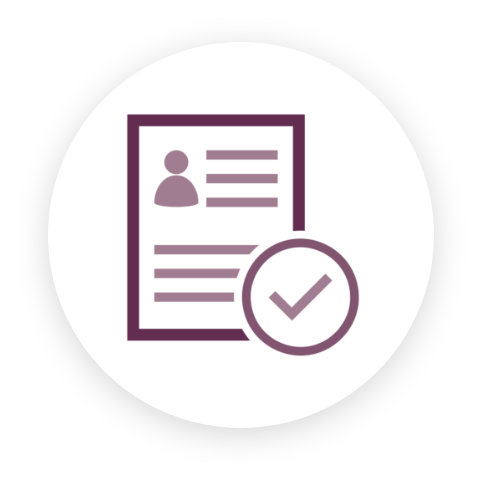Mention job descriptions and usually there is one of two reactions. One, people’s eyes immediately glaze- over, or two, people automatically respond with “got ‘em, my bases are covered.”
Fewer things may seem as uninteresting to talk about as job descriptions – even in the world of HR. They are not as scary like lawsuits. They are not funny like some of the crazy things employees do. They certainly don’t seem sexy or cool. Job descriptions are one of the least talked about and one of the most underappreciated aspects of employment compliance.
The reality is that we find most employers don’t have any; completely disregarding an essential element to employee management. When they do, they’re not done well; completely eliminating the value of having done them in the first place.
Bottom line: as an employer or manager of people, you need to know why they’re important, how best to write them, and when to make use of them. In the end, you may not think they’re any more exciting than you do now, but hopefully you’ll appreciate their value more than you have previously.
Why Bother?
There are a plethora of reasons to have accurate job descriptions on hand for every position within the business. Here are just three:
- Hiring tool: A job description helps to focus on the skills needed for the job as well as the duties. When interviewing, job descriptions can be used as the basis for developing solid job-related interview questions that help you identify whether candidates have the skills and abilities you need. The job description helps write a better advertisement and a copy of the job description shown to applicants gives them an accurate picture of the job. A new hire that quits because the job “wasn’t what I expected” can cost you time, money, and productivity. When new employees are provided a well-written job description, you set the stage for better performance.
- Staff management tool: A work environment where assignments and responsibilities are unclear is confusing, wastes time, and can lead to misunderstandings and disagreements. On the other hand, when employees clearly understand what is expected, they have the necessary information to focus on the most important responsibilities and to be more productive. One of the easiest, most effective ways to let employees know what you expect is with well-written job descriptions. Once the employee is hired, go over the job description in detail with him/her, emphasizing any duties that may require training. This will ensure that s/he knows exactly what is expected.
- Supports employment decisions: If an employee or a government agency challenges an employment decision, one of the most important documents you will be expected to provide is a copy of the job description. This can be a key component in defending your employment decisions. Job descriptions document the duties, qualifications and physical requirements of a job, and therefore help you support why you felt one applicant was qualified and another was not, why you pay one employee more than you pay another, or why you terminated an employee for poor job performance.
What should it include?
A good job description is comprised of the following key elements:
- Title of the position
- Employment status (exempt or non-exempt)
- A statement of the major purpose of the position
- Minimum eligibility requirements for adequate performance
- A description of the physical demands, the type and amount of work to be performed
- The individual or position the employee reports to
- *Essential functions*
What are “essential functions?
The concept of essential functions cannot be understated. This is a critical component of a comprehensive job description. Job descriptions should not include every nuance of the position. There is a difference, and rightly so, between a “Standard Operating Procedure” and a job description. For example, a standard operating procedure would be to describe the morning process for getting everything ready for receiving clients like booting up computers and turning on lights. These things can be done by anyone. A job description captures that which is essential to a specific position. An example of an essential function might be: a front desk employee at a dental office being responsible for all insurance billing.
According to the Equal Employment Opportunity Commission (EEOC), “Essential functions are the basic job duties that an employee must be able to perform, with or without reasonable accommodation. You should carefully examine each job to determine which functions or tasks are essential to performance. This is particularly important before taking an employment action such as recruiting, advertising, hiring, promoting or firing.”
When writing essential functions consider:
- What employees actually do and the amounts of time spent on each function.
- The amount of work to be performed.
- Keeping sentence structure as simple and concise as possible.
- Beginning each sentence with an active verb and avoid using the words “responsible for.”
- Including a percentage of time each essential function consumes as part of the whole job. Adding the percentage of time to each essential function involved helps clarify the level of importance that particular duty has as it relates to all other duties. For example, “Answers telephone, routes calls, provides information, and takes messages in accordance with practice procedures. 20%”
Under all disability laws, inability to perform non-essential, or marginal, functions of a job is generally not an acceptable reason not to hire or promote an individual with a disability. Therefore, it is important to distinguish clearly between essential and marginal duties on a job description.
If a hiring or employment decision is challenged, you may be required to show that the qualification standards used in the decision-making process are job-related and consistent with business necessity. A job description with essential functions listed can serve this purpose. In order to use a job description to back up your decisions, it must be prepared before advertising or interviewing for a job. A job description prepared after a claim is filed will not be considered as evidence.
When do I use them?
As mentioned, essential functions are used in hiring, ongoing personnel and performance management, and supporting decisions. One of most important reasons though is reasonable accommodation decisions.
Disability laws impact nearly every employer, whether the employer has 100 employees or 5 employees. The purpose of disability laws is to ensure that individuals with disabilities are given the same consideration for employment decisions as individuals without disabilities.
These laws protect individuals from adverse employment action based on their disability alone. Adverse employment actions are demotions, terminations, cut in hours, etc. – basically anything in which the individual suffers a setback. When employers are confronted with an employee who has a mental or physical disability, the employer must consider making reasonable accommodation for that individual to continue employment.
Reasonable accommodation is defined by the EEOC as “any change in the work environment (or in the way things are usually done) to help a person with a disability apply for a job, perform the duties of a job, or enjoy the benefits and privileges of employment.”
An employer must make a reasonable accommodation to the known physical or mental limitations of a qualified applicant or employee unless the employer can show that the accommodation would cause an undue hardship on the operation of its business.
An accommodation causes an “undue hardship” if it is too difficult or expensive for an organization to provide. What is considered reasonable varies greatly and depends on the size and resources of the organization, as well as on the nature of the accommodation. The burden of proof is on the employer to show that an accommodation is too expensive, too difficult or too disruptive.
How do you decide (and prove) if accommodation is reasonable or not? This is where the importance (and necessity) of having well-written job descriptions come into play. It begins by obtaining medical information from the employee who states s/he cannot perform his/her job duties and is looking for an accommodation. Let’s play this scenario out:
- Employee indicates either directly or indirectly that s/he cannot perform a job duty
- By reviewing the job description, it is determined that it is an essential function
- Employee must provide information from his/her treating physician about what s/he can and cannot do as it relates to the essential functions
- Employer sends medical certification paperwork to the treating physician along with an accurate, up-to-date job description
- Using the job description, the treating physician makes an assessment and provides the medical certification form back, indicating what the employee can and cannot do or what s/he needs in order to rectify the disability issue
- This could be time off, reduction in work duties, reduction in work hours and so on
- Employer receives this information and begins the process of determining reasonable accommodation or undue hardship
If an employer goes through this process without providing the job description that contains the essential functions, then the employer would have no documentation to otherwise support/defend any decision or adverse action taken with the employee as a result.
Conclusion
As a management tool, job descriptions can play a key role in a variety of situations – from the start of the relationship to the end of the relationship and everything in between. As consultants, we see firsthand the challenges employers face without having well-written job descriptions, that are kept up-to-date. To limit risk and liability, good documentation is the key. Your job descriptions represent the most underutilized and most needed document of them all. They are the go-to document for us and should be for you too.

































